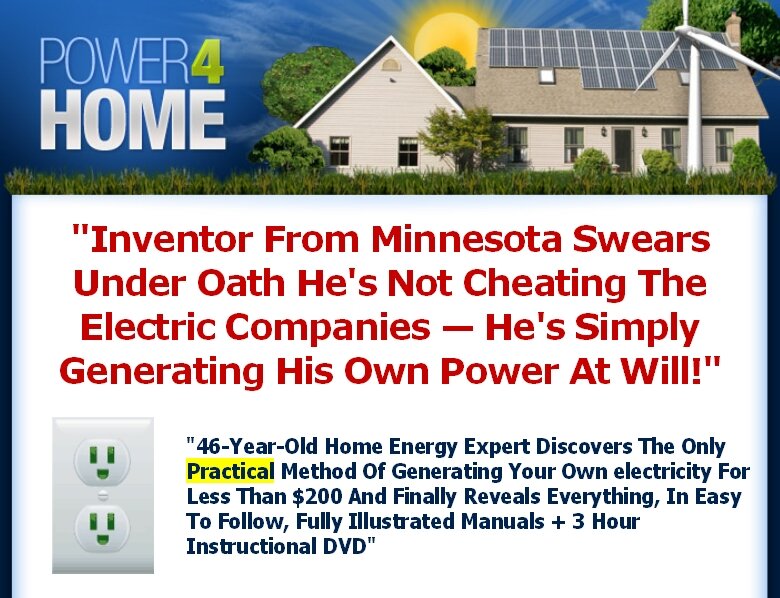
1) Residential renewable energy guide.
Power 4 Home is an information product that focuses on residential renewable energy. The technology covered in the guide is solar power and wind energy.
2) DIY solar panel guide.
The homemade solar panel as shared in Power 4 Home focuses on 1 solar panel. In the manual, it says you can build a solar module for under $200. That is the suggested cost of for 1 solar panel which consists of 36 pieces of Photovoltaic (PV) cells which is capable of generating about 18 volts and approximately 75 watts of electricity under a clear sunny day.
3) DIY wind generator guide.
Similar to the DIY solar panel manual, the cost shown in the wind turbine guide consists of the blades, electric generator, hub, tower, mounting, electrical components, timber etc only.
4) Costing not included.
The actually cost of a complete home solar power or wind generator is not covered in the manual. There are other components in the system such as DC disconnect, AC panel, charge controller, battery bank, power inverter, electric gauges, wiring cable etc are not cover in Power 4 Home.
These parts can be quite expensive and you would have to budget for them.
5) Skill sets required.
Making the DIY solar panel and wind turbine require a lot of work.
Not everyone can do it.
You would need certain skills or knowledge on woodwork, soldering, electrical wiring, drilling, using a multi-meter, electrical components etc.
6) Step-by-step instructional videos.
There are more than 2 hours worth of High Definition (HD) instructional videos that comes with Power 4 Home. The videos will show you how to tab the solar cell, arranging the solar cells, building the solar panel box, connecting the solar cells together, final assembly and testing of the solar panel.
7) Bonus material.
When you purchase Power 4 Home, you will also receive 5 bonuses. The bonuses are:
a) A part suppliers list.
b) An e-book with 83 ways to reduce your home energy needs.
c) A guide on advanced power saving technology.
d) IRS tax rebate forms.
e) Life time membership.
8) Product guarantee.
Since Power 4 Home is provided by Clickbank, you are covered by their 60 days money back guarantee. If you do not see any value in the guide, you can ask for your money back within 60 days from your purchase date.
9) Customer support.
The Power 4 Home program comes with a customer support system. Question regarding DIY solar panel or homemade wind turbine can be posted to a support ticketing system.
Your questions will be answer within 48 hours.
10) Product cost.
If you are planning to purchase Power 4 Home, it is available for a onetime payment of $49.97.


